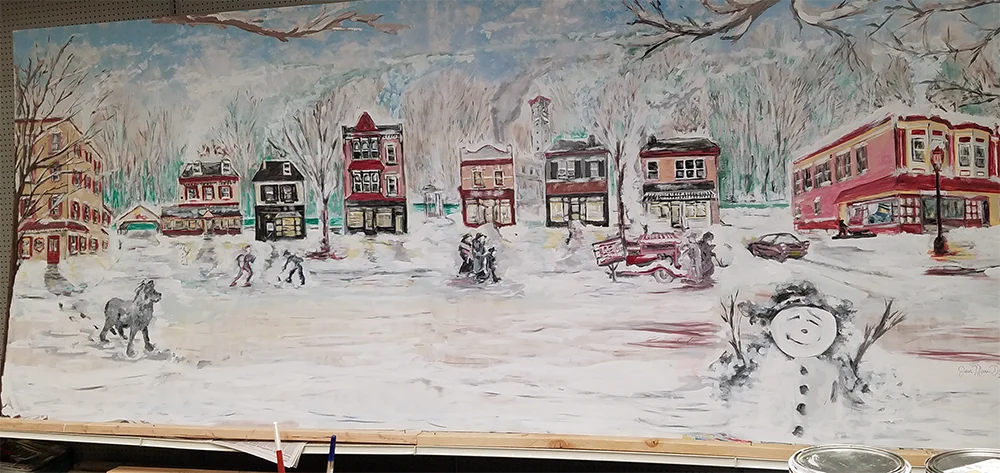Estimated reading time: 5 minutes
In this Blog
More Than Paint on Walls
Public streets have always told stories—sometimes in whispers, sometimes in bold, defiant color. From alleyways to highway underpasses, artists have used the street as a canvas for everything from celebration to protest. Today, harnessing the power of the street is about more than aesthetics; it’s about transformation.
In the wake of the recent No Kings protest signs painted over the weekend, it’s clearer than ever. Street art has become a language for communities seeking change. It provides recognition and visibility. This blog delves into urban art’s power. It examines street art as social commentary. Transforming public spaces with art can empower neighborhoods. It can also ignite action.
Harnessing the Power of the Street
The term “street art” once referred to illegal graffiti and underground tagging. Today, it includes everything from sanctioned murals to community-driven installations. Artists around the world use the street’s power. They share messages that don’t always make it into traditional galleries or institutions.
Think of the pavement as a stage, the wall as a voice. With city mural projects and street-level storytelling, artists bring local culture, struggles, and dreams into public view. Murals are no longer background—they are the main story.
The No Kings protests were a perfect example. These signs were created as a response to rising gentrification. They protested the loss of cultural identity in historically Black neighborhoods. The signs demanded attention in places where everyday people could see them. The aim was not just for art insiders to notice them.
Learn more about the history and impact of community murals at Mural Arts Philadelphia.
Transforming Public Spaces with Art
One of the most direct impacts of street art is its ability to transform public spaces with art. What was once a gray underpass or a forgotten wall becomes a beacon of life and intention. It invites engagement, interaction, and even pride.
Murals can activate a park, elevate a bus stop, or bring foot traffic to a once-ignored storefront. This creative place making creates ripple effects—attracting business, improving safety, and fostering community identity through civic engagement.
Explore the National Endowment for the Arts’ approach to Creative Place making for deeper insight.
Street Art as Social Commentary
Some of the most powerful street art comes from protest. It’s fast, emotional, and unfiltered. From the Black Lives Matter street murals to recent No Kings protest signs, these pieces carry urgency.
Street art as social commentary gives voice to those who are often unheard. Artists use it to highlight injustice, celebrate resilience, and call for action. It’s visual activism with a paintbrush—art with a message.
Discover how protest murals shape public perception and memory in this Smithsonian Magazine article.
The Role of Artists in Urban Renewal
In cities undergoing rapid change, artists often find themselves at the front lines. The role of artists in urban renewal has evolved—no longer just observers, many are now shaping how redevelopment unfolds.
Through artist-led revitalization, creatives are re-purposing vacant lots. They are re-imagining blighted buildings. They are designing murals that reflect the cultural heritage of their communities. This integration of art and urban planning ensures that public voices are included in how spaces are reshaped.
For examples of how artists impact community design, visit NEA’s Creative Place making section.
Street Art and Community Identity
Perhaps the most important aspect of street art is its ability to reflect and shape community identity. A mural can depict local heroes. Alternatively, a piece of public art can be created during a cultural festival. These works reinforce a shared sense of place.
Street art and community identity go hand in hand. The art tells the story of the people who live there—their values, challenges, and dreams. It helps neighbors recognize each other, find common ground, and build pride.
Case in Point: No Kings Protest Murals
Last weekend’s No Kings protest signs weren’t just about paint—they were about presence. Created in neighborhoods threatened by development, these murals became flash points of cultural resistance. They boldly stated: “We’re still here.”
Covering construction fences, shuttered businesses, and neglected corners, these pieces brought together artists, residents, and activists. In doing so, they created more than art—they created visibility. This is grassroots expression at its boldest.
This public space creativity is exactly why harnessing the power of the street remains vital. It empowers people to reclaim the spaces they call home, and to say something that cannot be ignored.
Final Thoughts: A Street-Level Revolution
Street art isn’t going away—it’s expanding. From painted crosswalks to rooftop murals, the city has become an open-air gallery. And in this gallery, every wall is a conversation, every brushstroke a declaration.
By harnessing the power of the street, we’re not just adding color—we’re amplifying voices.
To the artists, organizers, and neighbors turning pavement into poetry: keep painting.
Support your local artists. Join a mural walk. Start a neighborhood art project. The street is calling—what will you say back?
Related Links
Looking to Bring the Magic of Storytelling to Your Own Space?
- Turn your vision into reality!
- Let’s discuss how a collaborative mural project can inspire your community.
- Discover the benefits of a mural creation and contact me today for a free consultation!


Leave a Reply